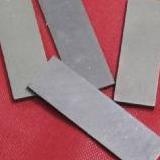
Mining of rare earths is a dirty business, leading to radioactive waste and polluted water this with the fact that China, the largest producer of rare earth elements, is reducing their production to clean up processes as well as reducing exports is asking for an increase in recycling.
A Japanese research team developed a technology to selectively separate and collect rare earth materials such as neodymium (Nd) and dysprosium (Dy) from used neodymium-iron-boron (Nd-Fe-B) magnets.
Because the technology uses a dry process that uses halide salts such as chlorides and iodides, it does not generate a harmful waste liquid. This time, the research team conducted experiments by using magnesium chloride (MgCl2) and zinc iodide (ZnI2).
When MgCl2 is used for extraction, the reaction temperature and reaction time in the extraction process are 1,273K and three to 12 hours, respectively. In the processes of separation and collection, the reaction temperature and reaction time are 1,273K and six hours. The research group confirmed that about 90% of the Nd and about 87% of the Dy contained in a magnet alloy were extracted through a 12-hour extraction process. In the separation and collection processes, MgCl2 and NdCl3 clumped together at a part whose temperature ranged from 500 to 900K, and NdCl3 gathered at a part whose temperature was 1,050K.
When ZnI2 is used, the reaction temperature and reaction time in the extraction process are 740K and 12 hours, respectively. In the processes of separation and collection, the reaction temperature and reaction time are 1,073K and one hour.
In the experiments, the research group carried out the extraction and the separation/collection as separate processes. But, to commercialize the technology, a semicontinuous extraction/separation device is required. And the group has already applied for an international patent for the structure of the device.
This time, rare earth materials seeped out in the molten salt (liquid phase) in the extraction process. But it is also possible to extract rare earth materials by providing MgCl2 in the gas phase and transfer them to a device with a different temperature to separate and collect the chlorides of the rare earth materials.

Comments by our Users
Be the first to write a comment for this item.